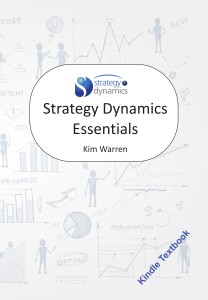Kim Warren on Strategy
Strategy insights and living business models
Strategy in cyclical industries
The world’s biggest basic materials firms are suffering along with others as the world economy collapses, and the Economist points out that taking on loads of debt to grow and acquire others did not help. But these industries have always suffered cyclicality, even when not buffeted by extreme market conditions. Pity is that we have known how to steer away from these dangers for many years. Seems to me the same principles would have been useful to a great many other firms over the last 5-6 years. Here’s the essentials and an article that explains more …
Cyclicality afflicts many industries, not just basic materials like steel, paper-pulp and chemicals, but other sectors including shipping, insurance and office space. They suffer far worse cyclicality in price-levels and profitability than can be explained by variability in the markets they serve – why?
How these industries behave
What these industries have in common is that capacity increases come in large lumps and take a long time from any decision to raise capacity and that increase coming on-stream. So, any growth in demand leads to tightening supply and rising prices and profitability. Many firms respond by announcing new capacity, and during the delay while shortages persist, prices and profits sky-rocket, leading to still more plans for new capacity. Eventually, that capacity all comes on-stream, grossly exceeding demand levels, and prices collapse for as long as it takes for demand to grow to match – often many years.
A further mechanism is that during the up-turn, investors take some time to be persuaded that higher prices and profits are real, adding a still further delay and exaggerating the boom and bust still further.
How to manage strategy in cyclical industries
Dealing with these circumstances was certainly documented as long ago as 1996, though experienced executives in many of the industries affected by cyclicality had long known intuitively what to do:
- first, do not spend money on building new capacity when demand exceeds supply and prices and profits are strongest – every else will be doing the same
- instead, take all the excess margin and build up cash reserves
- when excess capacity comes on-stream and prices and profits collapse, competitors will be in trouble, and you can use the capital war-chest to buy fire-sale assets or entire companies
- take the opportunity to shut down inefficient capacity, either amongst what you had before or acquired, to shorten the time when supply exceeds demand
- if underlying demand looks healthy, invest in new capacity before prices and profitability recover, so that it will come on-stream in time to take most of the share of any increased demand.
Copyright © 2026 Kim Warren on Strategy. All rights reserved

